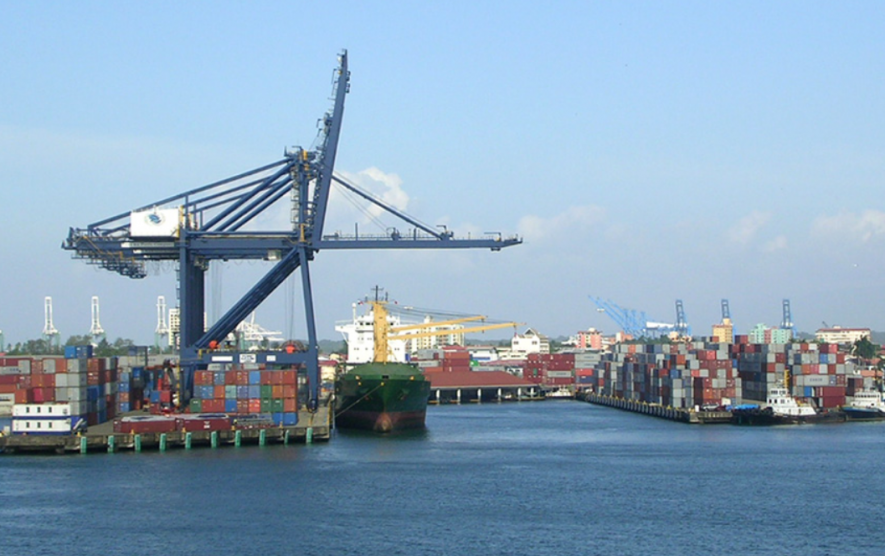Indian Exports Under Siege: US Tariff Gamble!

Representational use only.Image Courtesy: Wikimedia Commons
The recent imposition of a 25% tariff by the United States on select Indian exports under Section 301 of the US Trade Act, alongside associated penalty threats, signals a troubling chapter in India-US trade relations. This move, primarily targeting sectors, such as gems and jewelry, steel and aluminum, digital services, textiles, and agriculture, is driven by longstanding disputes over market access, digital trade practices, and retaliatory tariffs by India on US products.
Washington has raised concerns about India’s data localisation rules, import duties on electronic goods, and its broader digital sovereignty push, interpreting these as barriers to US commercial interests. In response, India has emphasised the need to protect local industries and maintain regulatory space, particularly for emerging sectors like fintech and digital payments.
Yet, the escalation has not remained symbolic; it directly endangers sectors that are deeply integrated into India’s export ecosystem and serve as lifelines for employment and rural livelihoods. Understanding the consequences of these tariffs requires an assessment of their short-term and long-term ramifications for India’s financial stability, especially as these sectors represent crucial contributors to foreign exchange reserves, fiscal health, and inclusive growth.
In the short run, India is likely to face immediate disruption in trade flows. Gems and jewelry, which contribute nearly $38 billion annually, or 10% of India’s total merchandise exports, are particularly vulnerable, as nearly one-third of their exports head to the US. Any steep duties here could paralyse MSMEs (medium, small and micro enterprises), jeopardise millions of jobs, and erode forex inflows.
Similarly, the IT and digital services sector, the largest contributor to India’s services exports with a value exceeding $180 billion, will be strained by increased scrutiny and potential digital service taxes. This sector not only ensures a consistent services trade surplus but also anchors India’s foreign exchange reserves and macroeconomic buffer.
Agriculture, with exports like rice, shrimp, and spices valued at over $16 billion collectively, will face reduced competitiveness, especially in the shrimp sector, where the US remains a major consumer.
Steel and aluminum, vital for India’s infrastructure sector, and textiles, employing over 45 million people, are also positioned at risk, with downstream effects expected on employment, bank credit flows, and regional MSMEs. The confluence of these sectoral shocks could stress India’s current account balance, complicate inflation control, and increase rural and industrial distress.
Long-term impacts could be even more structural. As these tariff barriers persist, Indian exporters may lose permanent market share, especially in highly competitive global markets. A prolonged decline in gems and jewelry exports, for instance, could lead to a contraction in urban employment in Gujarat and Maharashtra, regions heavily dependent on the trade.
Persistent digital service restrictions could stall India’s ambitions to lead the global digital economy, stifling innovation and reducing FDI flows. Agriculture’s vulnerability may increase rural indebtedness, weaken cooperative banks, and aggravate the already fragile rural financial ecosystem. Steel and aluminum, if burdened with tariffs and non-tariff barriers, could dampen industrial growth forecasts and derail infrastructure goals.
Moreover, the compounded loss in export earnings would narrow the fiscal space for public investment, disrupt currency stability, and increase reliance on external borrowings. In such a scenario, financial institutions could face heightened non-performing asset (NPA) risks, especially in sectors with large exposure to export credit, further straining the already cautious lending environment.
Among all affected sectors, gems and jewelry and digital services stand out as the most critically endangered. The former is due to its direct export exposure to the US and employment generation capacity in labour-intensive clusters, and the latter is due to its foundational role in maintaining India’s services surplus and currency reserves.
Agriculture and textiles follow closely, though their impact is more pronounced in domestic financial inclusivity and rural livelihoods. Steel and aluminum, while less export-heavy, influence broader industrial health and banking exposures.
To capture the scale of dependence, India’s digital services account for more than 50% of total services exports, while gems and jewelry form around 10% of total merchandise exports. Agricultural products, such as shrimp and spices contribute to about 10-11% of total exports and are essential for rural sustenance. Textiles and apparel contribute 8-9% and underpin mass employment across low-income states. Steel and aluminum contribute about 4-5% and impact corporate profits and capital markets. These figures highlight the sector’s strategic significance to both external and internal financial stability.
India’s response must, therefore, be both tactical and strategic. In the short term, the government can explore trade negotiations and targeted tariff exemptions through bilateral diplomacy or WTO (World Trade Organisation) mediation. It can also offer export incentives, extend interest equalisation schemes, and enhance credit availability to MSMEs in the impacted sectors.
Diversifying export markets beyond the US, such as to ASEAN, the European Union and Africa, will also be essential. Over the long run, India must strengthen its trade infrastructure, invest in high-quality manufacturing, and develop digital trade frameworks that align with global standards while preserving domestic autonomy.
For agriculture, policies should focus on value-chain upgrades and bilateral phytosanitary agreements. In digital services, ensuring clarity in cross-border data flow policies and avoiding unilateral taxes will be crucial.
Most importantly, a financial buffer must be built by promoting rupee internationalisation, strengthening forex reserves, and deepening domestic capital markets. Only with such a multi-pronged strategy can India weather the storm of protectionist headwinds and preserve the integrity of its financial stability in an increasingly uncertain global trade environment.
The writer is a research officer at Indian Institute of Public Administration, New Delhi, India, specialising in financial stability, banking finance, and public policy. The views are personal.
Get the latest reports & analysis with people's perspective on Protests, movements & deep analytical videos, discussions of the current affairs in your Telegram app. Subscribe to NewsClick's Telegram channel & get Real-Time updates on stories, as they get published on our website.
























